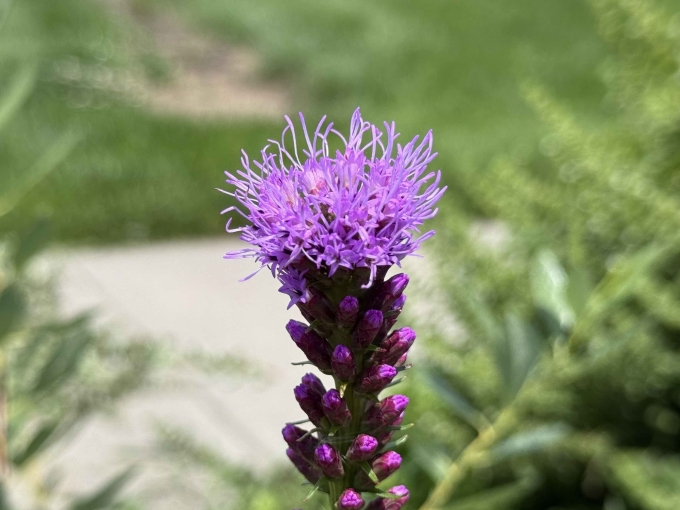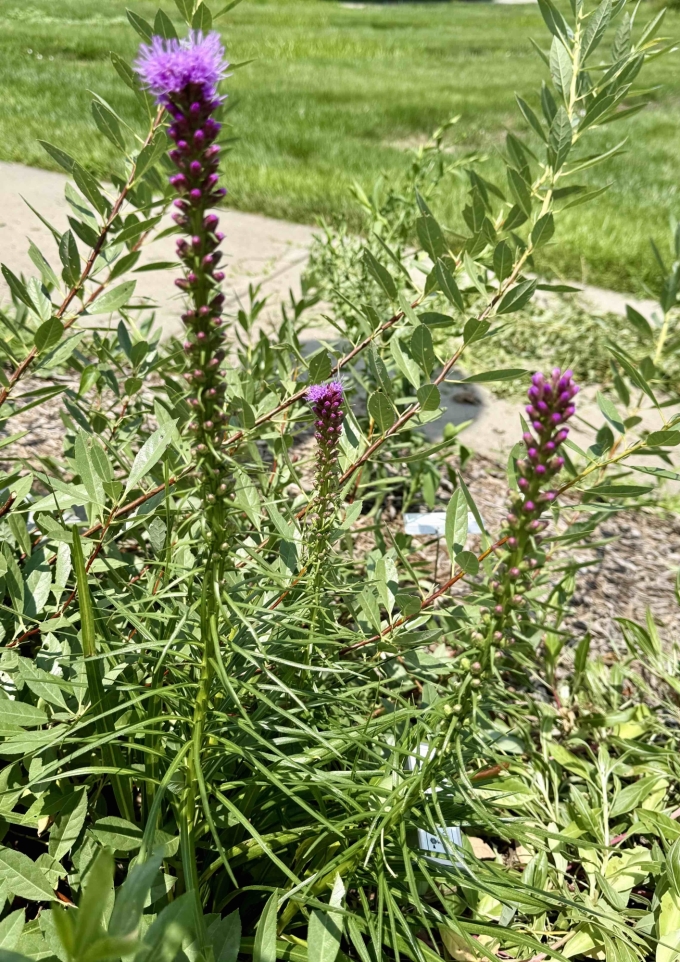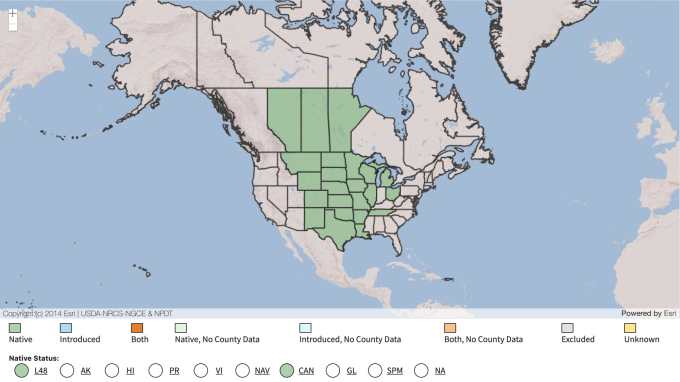Common Name: Dotted Blazing Star
Family: Asteraceae
Plant Type: Herbaceous Perennial
Native Range: Great Plains and central North America, including Nebraska
Hardiness Zones: 3–9
Height: 1.0 to 2.5 feet
Spread: 1.0 to 1.5 feet
Bloom Time: Late summer to fall (August–October in Nebraska)
Bloom Description: Spikes of dense, bright pink to lavender-purple flowers arranged in small, rounded “dots” along the stem
Sun Exposure: Full sun
Water Needs: Low
Soil Preference: Well-drained, sandy, or rocky soils; thrives in poor, dry soils
Management Level: Low
Suggested Use: Prairie plantings, xeriscapes, pollinator gardens, rock gardens
Attracts: Bees, butterflies (including Monarchs), skippers, and other pollinators
Tolerates: Drought, poor soils, heat, deer
Notable Features: Extremely drought-tolerant, long-lived, important late-season nectar source for pollinators
Nebraska Growing Notes:
Dotted Blazing Star is a hardy, drought-tolerant native prairie plant, perfect for dry, sunny locations across Nebraska, particularly in sandy soils or upland prairies. Its deep taproot allows it to withstand prolonged drought and harsh conditions, making it ideal for xeric gardens and restorations.
This species stays more compact than other Liatris species, with shorter, sturdy spikes that don’t require staking. Flowers appear as rounded “dots” up the stem, providing reliable late-summer to fall color and critical nectar for migrating Monarchs and late-season pollinators.
Once established, it requires little to no supplemental water and no fertilizer.
Landscape Use:
Excellent for prairie restorations, rock gardens, pollinator beds, dry borders, and naturalized wildflower plantings. Pairs beautifully with Bouteloua gracilis, Ratibida columnifera, Penstemon, Coreopsis, and other drought-tolerant natives.
Caution:
Non-toxic and wildlife-friendly. May be slow to establish due to its deep taproot, so avoid disturbing once planted. Not suited for wet or poorly-drained soils.
Garden Locations:
Bed(s) 4, 10



